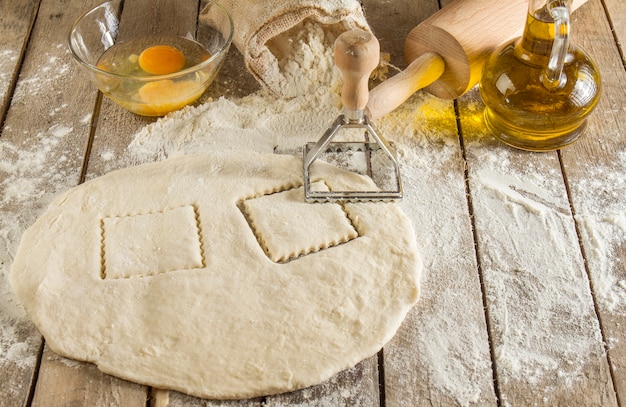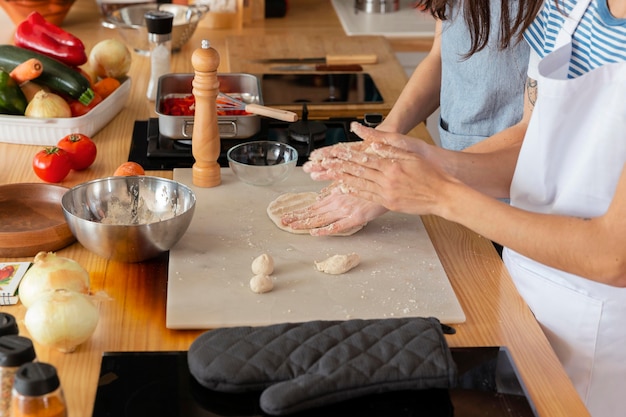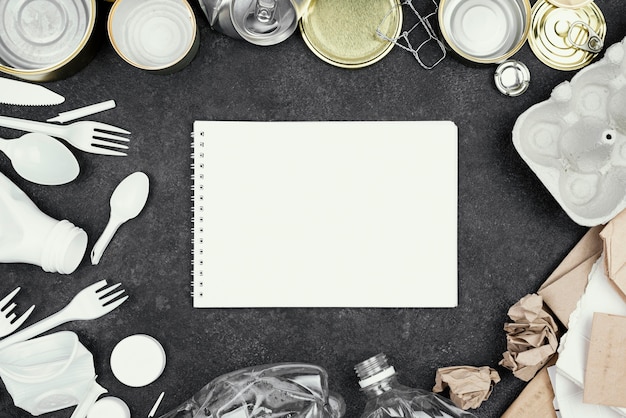The Wax Paper Conundrum: A Sceptical Chef's Journey

See, I've always been a bit of a kitchen sceptic. I'm the kind of person who reads the instructions on a packet of instant noodles three times before I even consider boiling the water. So, when I saw people using wax paper for cooking, my internal alarm bells started ringing. It just didn't seem logical, did it? Wax paper is, well, waxy. And wax isn't exactly known for its culinary qualities, is it?
Imagine it: you're putting your carefully crafted dish on a sheet of paper coated in a layer of wax. Won't the food stick? Won't the wax melt? And won't the whole thing just end up a sticky, messy disaster? I couldn't picture it ending well. But hey, I'm always up for a good kitchen experiment, so I decided to delve into this wax paper mystery.
Unveiling the Science: Wax Paper in the Oven

First things first, I did some research. I'm no scientist, but I knew a bit of digging wouldn't hurt. And what I found was, well, a bit of a mixed bag.
It turns out that the wax used on most wax paper is food-grade paraffin wax, which is generally considered safe for food contact. That's a relief, right? I mean, if it's food-grade, it must be OK, right? But here's the catch: the wax doesn't actually cook the food. It's the heat from the oven that does the magic. The wax paper simply acts as a barrier, preventing your precious food from sticking to the baking sheet.
My First Experiment: Cookies on Wax Paper

Armed with this newfound knowledge, I decided to put wax paper to the test. I went for something simple - baking some cookies. Why? Because who doesn't love a good cookie? And I already had all the ingredients ready to go.
Part 1: The Cookie Dough
I whipped up a batch of my trusty chocolate chip cookie recipe. I know, I know, a classic, but you can't go wrong with a classic, can you? I carefully rolled out the dough, cut out my cookies, and placed them on a baking sheet lined with wax paper. I must admit, I was a little nervous. But I figured, what's the worst that could happen? The cookies would probably end up a bit oily.
Part 2: The Bake-Off
I popped the tray into the oven and set the timer. I kept peeking at the oven every few minutes, wondering if the wax paper would melt or set the cookies on fire. But to my surprise, everything seemed to be going smoothly.
Part 3: The Verdict: A Cookie Miracle?
When the timer beeped, I carefully pulled the tray out of the oven. And guess what? The cookies were perfect! They had a lovely golden-brown colour, and they had baked evenly. I couldn't believe it. The wax paper had actually worked! And the best part? The cookies came right off the wax paper without sticking. No oil, no mess, nothing! I was officially a wax paper convert.
(Part 2)Beyond Cookies: Exploring the Versatility of Wax Paper
So, having conquered cookies, I decided to see what other culinary wonders I could achieve with wax paper. I dove deeper into the world of wax paper cooking, and let me tell you, it's a fascinating place.
Baking: More Than Just Cookies
When it comes to baking, wax paper is surprisingly versatile. Here are a few ideas I discovered:
- crispy skinned Chicken: I'm a huge fan of crispy chicken skin, and wax paper can help you achieve that golden crunch. Simply place your chicken pieces on a baking sheet lined with wax paper, and bake as usual. The wax paper will help prevent the chicken from sticking and will encourage that irresistible crispy skin.
- Fudge Brownies: These are always a bit tricky to remove from the pan, but wax paper can help! Line your baking pan with wax paper, pour in your brownie batter, and bake. Once the brownies are cool, simply lift the wax paper, and you'll have perfectly intact brownie squares, ready for your chocolatey enjoyment.
- Delicate Cookies: Cookies like macarons or biscotti can be prone to sticking to the baking sheet. Wax paper can help prevent this, ensuring that your cookies come out nice and crisp, just as they should be.
- Air Fryer Delights: Air fryers are becoming increasingly popular, and wax paper can be a great way to line your air fryer basket. This will prevent your food from sticking, making cleanup a breeze and ensuring that you don't lose any precious bits of your delicious creations.
Beyond Baking: Wax Paper's Culinary Range
But wax paper isn't just for baking. It can also be useful for other cooking methods. For example:
- Steaming Vegetables: Line a steamer basket with wax paper to prevent your vegetables from sticking. You can also use it to create little pouches for steaming individual servings, perfect for a healthy and mess-free meal.
- Grilling: For a cleaner grill, place a sheet of wax paper on the grill grate before placing your food. This will help prevent food from sticking to the grate and will make cleanup easier, ensuring that your grilling experience is more enjoyable.
- Freezing: Wax paper can be a great way to wrap individual portions of food for freezing. Simply wrap the food in wax paper, place it in a freezer-safe bag or container, and freeze. This will prevent freezer burn and will make it easy to grab individual portions as needed, making meal prep a breeze.
Wax Paper vs. Parchment Paper: The Showdown
Now, you might be thinking, "Hang on, isn't there something called parchment paper?" And you'd be right. Parchment paper is another popular choice for baking and cooking. So, how do the two compare?
Wax Paper vs. Parchment Paper: A Detailed Comparison
Here's a more detailed breakdown of the key differences between these two kitchen staples:
| Feature | Wax Paper | Parchment Paper |
|---|---|---|
| Material | Paper coated with food-grade paraffin wax | Unbleached, uncoated paper |
| Temperature Resistance | Lower; not suitable for high-heat cooking (over 400°F or 200°C) | Higher; can withstand high temperatures (up to 425°F or 220°C) |
| Grease Resistance | Good; prevents food from sticking | Excellent; highly resistant to grease and oil |
| Stickiness | Less likely to stick to food, but can sometimes tear easily | Very unlikely to stick to food, and generally more durable |
| Cost | Generally cheaper | Generally more expensive |
| Recyclability | Not recyclable | Not recyclable |
So, the main difference is that parchment paper is uncoated and has a higher temperature resistance than wax paper. This means that parchment paper is a better choice for high-heat cooking and for recipes that require browning or crisping, like roasting vegetables or baking bread.
But, here's the thing: wax paper is still a great option for baking, especially for things like cookies, brownies, and chicken. It's also a good choice for steaming, grilling, and freezing. Plus, it's generally cheaper than parchment paper, making it a budget-friendly option for everyday use.
Wax Paper: A Kitchen Hero in Disguise
I have to say, I've become a real fan of wax paper since my little cookie experiment. It's a simple, versatile tool that can make a big difference in the kitchen. It's great for baking, it's good for steaming, it's useful for grilling, and it's even perfect for freezing. And, it's surprisingly affordable, making it a great addition to any kitchen pantry.
So, the next time you're in the kitchen, give wax paper a try. You might be surprised at just how useful it can be. And hey, it might even save you a few cleaning headaches. After all, who doesn't love a clean kitchen?
(Part 4)FAQs: Wax Paper Myths and Misconceptions
Here are some common questions people have about wax paper cooking:
Q1: Is it safe to use wax paper in the oven?
A1: Yes, it's generally safe to use wax paper in the oven. As long as you use food-grade wax paper and don't exceed the recommended temperature (around 400°F or 200°C), it should be safe. Just remember that wax paper is not as heat-resistant as parchment paper. So, you should avoid using it for recipes that require very high heat, like baking bread or roasting vegetables at high temperatures.
Q2: Can wax paper be used in the microwave?
A2: No, it's not safe to use wax paper in the microwave. The wax can melt and become a fire hazard. If you need to microwave food, use a microwave-safe dish or cover.
Q3: Can I reuse wax paper?
A3: It's not recommended to reuse wax paper. Once it's been used, it can become contaminated with food particles and bacteria. Plus, the wax can become damaged and less effective, potentially leading to sticking or uneven cooking.
Q4: Can I use wax paper to line my slow cooker?
A4: It's not recommended to use wax paper in a slow cooker. The wax can melt and contaminate your food. If you need to line your slow cooker, use parchment paper or a silicone liner. These materials are designed to withstand the heat and moisture of a slow cooker without melting or breaking down.
Q5: How do I dispose of used wax paper?
A5: You can dispose of used wax paper in your regular trash. It's not considered recyclable due to the wax coating. However, some local recycling programs may accept wax paper for specialized processing. Check with your local recycling guidelines for more information.
(Part 5)A New Perspective on Wax Paper: Beyond the Basics
I used to think wax paper was just for wrapping sandwiches. But now, I see it as a versatile and useful tool in the kitchen, especially for those of us who like to experiment with new techniques. It can help prevent sticking, make cleanup easier, and even enhance the texture of your food, particularly with baked goods like cookies or brownies. It might not be as fancy as parchment paper, but it definitely has its place in the kitchen. So, the next time you're at the grocery store, grab a roll of wax paper – you never know when you might need it for your next culinary adventure.
Everyone is watching

Corn on the Cob: The Ultimate Guide to Perfectly Cooked Ears
Healthy MealsAh, corn on the cob. Just the name evokes images of sunny days, barbecues, and that sweet, juicy flavour that ...

Perfect Pork Roast Oven Cooking Time: A Guide to Delicious Results
Healthy MealsThere's something truly satisfying about a perfectly roasted pork. The aroma alone is enough to make your mout...

Scallops: The Ultimate Guide to Perfect Cooking
Healthy MealsAh, scallops. Those delicate, sweet, and utterly delicious morsels of the sea. They hold a special place in my...

Spaghetti Squash: The Ultimate Guide to Cooking and Serving
Healthy MealsRemember that time you saw spaghetti squash at the supermarket, looking all bumpy and strange, and thought, "W...

Ham Cooking Time: How Long to Bake, Smoke, or Boil a Delicious Ham
Healthy MealsAh, ham. It's a classic, isn't it? A real crowd-pleaser, especially around holidays. And when done right, it'...
